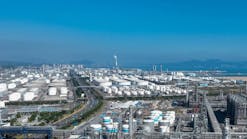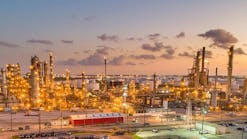Gazprom will take measures to prevent melting of permafrost as it develops giant Kharasaveyskoye gas-and-condensate field on the Yamal Peninsula in arctic Russia.
Full-scale development will start next year, according to Gazprom officials meeting in Bovanenkovo in the Yamal-Nenets Autonomous Area.
Kharasaveyskoye straddles the Kara Sea coast north of Bovanenskovskoye gas-and-condensate field, which will reach design capacity of 115 billion cu m/year of gas with the launch this year of a third train at the Yamal production center (OGJ Online, Mar. 2, 2017).
According to Gazprom, Kharasaveyskoye holds explored and preliminary estimated (C1+C2) reserves of 2 trillion cu m of gas.
Initial development will target Cenomanian-Aptian deposits, from which production is to start in 2023 with design capacity of 32 billion cu m/year.
Later development will target Neocomian-Jurassic deposits.
Offshore wells will be drilled from onshore surface locations.
Thick permafrost and high soil salinity complicate construction of facilities, now including a utility system with a camp for shift workers and an auxiliary power station.
Predevelopment work will include construction of a gas-treatment unit, a booster compressor station, and transport and power equipment along with cluster-drilling of production wells.
Gazprom said it will use vapor-liquid cooling systems to avoid permafrost melting and thermally insulate tubing and casing.
A 100-km pipeline will connect Kharasaveyskoye and Bovanenkovskoye fields.


